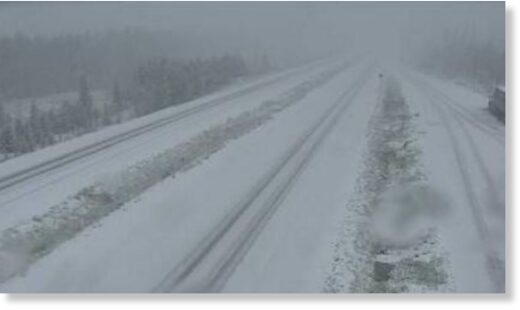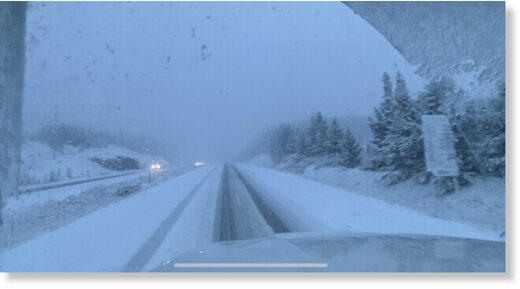Walk out on a clear evening in late September for October and take a deep breath. You can small the frost coming!HOW TO PREDICT A FROST
LEARN HOW TO KNOW WHEN FROST IS AROUND THE CORNER
By Catherine Boeckmann
The Old Farmers Almanac
June 1, 2021
Frost is one of a gardener’s worst foes! Learn how to predict frost, understand the difference between a frost advisory and a freeze warning, and protect your garden from frost!
WHAT IS A FROST?
“Frost” refers to the layer of ice crystals that form when water vapor on plant matter condenses and freezes without first becoming dew.
Many plants can survive a brief frost, but very few can survive a hard freeze. (See more about this below.)
- A light frost occurs when the nighttime temperature drops to at or just below 32°F (0°C).
- A hard freeze is a period of at least four consecutive hours of air temperatures that are below 28°F (–2°C).
FROST ADVISORY VS. FREEZE WARNING
As with other significant weather events, meteorologists will often issue a “warning” or an “advisory,” depending on the likelihood of the event happening and its severity. According to the National Weather Service, the warning terms for frosts and freezes are defined as follows:
Of course, the easiest way to predict frost is to let the weatherman do it for you! However, if you want to be able to predict it yourself, read on.
- Frost Advisory: Issued when minimum temperatures are expected to be between 33° and 36°F (0.5° and 2°C). Skies are generally clear and winds light.
- Freeze Watch: Issued when minimum temperatures are expected to be 32°F (0°C) or less within the next 24 to 36 hours.
- Freeze Warning: Issued when minimum temperatures are imminently expected to be 32°F (0°C) or less.
- Hard Freeze Warning: Issued when minimum temperatures are expected to be 28°F (–2°C) or less.
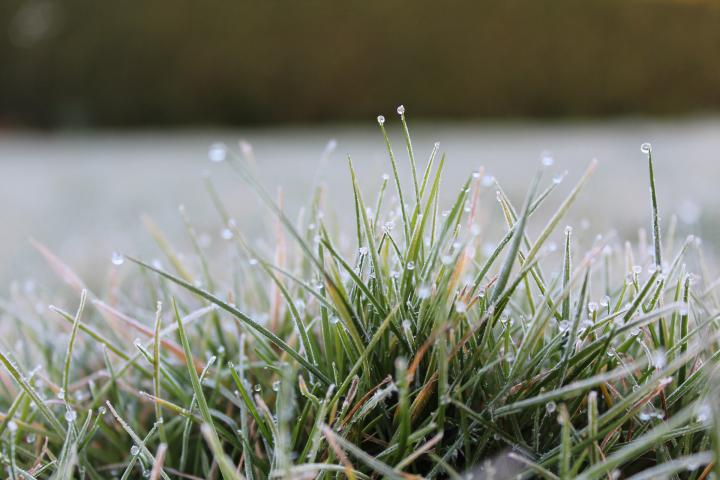
KNOW YOUR FROST DATES
The first step in predicting frost involves getting to know the average frost dates for your area. Put your zip code in our Frost Dates Calculator to find frost dates for spring and fall for your location.
Note: These dates are averages, so they can only tell us what is typical. However, every year will be diffferent.
Also, the frost dates are based on a 30% probability, meaning that there is a 30% chance of a frost occurring after the given spring frost date or before the fall frost date. (In other words, these dates are NOT absolutes and should only be used as rough guidelines!)
Learn Your Microclimates
Keep in mind that the occurrence of frost can vary greatly by microclimate, too. In fact, while you may have frost in your garden, your neighbor across the street may see no sign of it!
A microclimate is exactly what it sounds like: a climate on a small scale. For example, if your garden is located at the bottom of a hill where cold air settles, it’s likely to be impacted by frost earlier than a garden at the top of the hill. Or, if your plants are abutting a rock wall in full sun, they’ll be kept warmer to some extent by the heat given off by the rocks.
5 TIPS FOR PREDICTING FROST
Consider these factors when the radio and TV reports say “frost tonight”:
- Temperature: How warm was it during the day? It may sound simple, but one of the best ways of determining if a frost is due overnight is to gauge the temperature. If the temperature reached 75ºF (in the East or North) or 80ºF (in the desert Southwest), the chance of the mercury falling below 32ºF at night is slim. See our 7-day forecasts to check your weather forecast.
- Is it windy? A windy night is also likely to reduce the likelihood of a frost. A still night allows cold air to pool near the ground; a light breeze stirs things up; a heavy, cold wind sweeps away warm air near the ground.
- Is it cloudy? Observe the sky. If the Sun sets through a layer of thickening clouds, the clouds will slow radiational cooling and help stave off a frost. With clouds, the risk of frost is reduced.
- Slope: How is your garden landscaped? Gardens on slopes or high ground often survive. However, cold air sinks and will puddle down into the valleys and hollows. If your home and garden are at the bottom of a slope or in a valley, and there is no wind, then there is higher risk of frost. A landscape with trees can assist in preventing frost. Trees transpire a lot of moisture through their leaves.
- What is the dew point? As a rule of thumb, don’t worry about a frost if the dew point (the temperature at which the air is no longer able to ‘hold’ all the moisture within it) is above 45°F on the evening weather report. The more moisture in the air, the less likely a frost. A light watering of the garden a day or two before a frost is predicted can help stop it settling.
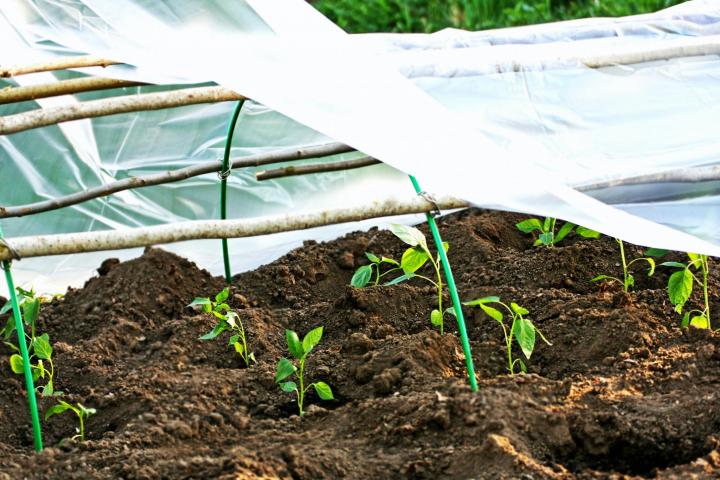
Row covers can protect tender crops from a light frost. Photo by NataliaL/Shutterstock
WHAT TEMPERATURES CAUSE FROST DAMAGE?
Frost causes damage and even failure to many vegetable crops. But also there are other vegetables which actually benefit from a frost. The flavor of broccoli, for instance, actually improves if the plant has experienced a frost, and carrots get sweeter as the temperature drops.
How low can you go? The temperatures shown in the graphic below tell you when the frost will cause damage to the respective vegetable.
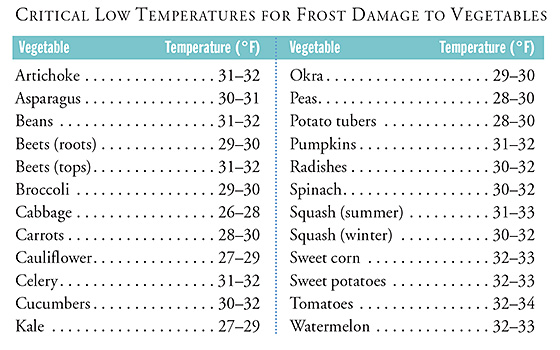
HOW TO PROTECT PLANTS FROM FROST
Frost can hit in spring or fall in most areas. Generally, covering plants to create a temporary pocket of warmer air is the best way to protect them.
For more frost protection tips, read our main article: Protecting Your Garden from Frost.
- Keep an eye on the weather forecast. If it looks like temperatures are going to drop, get ready to protect tender plants.
- Make use of season extenders like row covers, cold frames, or cloches to protect tender plants, such as seedlings or warm-weather veggies. Row covers or garden fleece can be used to help create a warmer environment beneath them. You’ll need to use posts, bamboo, or flexible PVC piping to create space for the plants to grow, then drape landscape fabric or plastic over the frame; weigh down the edges with rocks or bricks or pegs so the covers do not blow away. To protect young plants from frost, use 2-liter soda bottles cut in half as cloches.
- It’s best to have all covers in place well before sunset. Drape loosely to allow for air circulation. Before you cover the plants in late afternoon or early evening, water your plants lightly.
- Remove any covers by mid-morning so that plants can get full exposure to the warming sunlight.
LEARN MORE
Following these tips should help prevent your garden from taking too much of a hit when frost occurs!
For even more end-of-season gardening advice, see Preparing Your Garden for Winter and Fall Chores: Autumn Garden Cleanup.
Let us know in the comments what you do to prepare for frost!
ABOUT THIS BLOG
Your Old Farmer’s Almanac editors occasionally share our reflections, advice, and musings—and welcome your comments!
How to Predict a Frost: Frost Advisories, Freeze Warnings, and More | The Old Farmer's Almanac
Summerthyme
Last edited:




















/cloudfront-us-east-1.images.arcpublishing.com/dmn/JGDZSTSMQJD7HOP3LRQO4FSSNY.jpg?w=640&ssl=1)
















